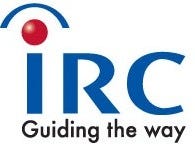Manufacturers have, for decades, pursued a globalization strategy purchasing from around the world convinced that sourcing the lowest cost inputs would enhance their competitiveness. At the same time, the prevailing geopolitical philosophy was that integration of the global economy would make the costs of conflict unacceptable and lead to global peace. Both beliefs have been turned on their head. This paradigm has shifted in response to recent disruptions to the supply chain and concerns about economic security.
The global sourcing model accommodated some of the ‘predictable’ disruptions to the supply chain such as labor action, natural disasters, shipping delays, raw material price fluctuations and other uncertainties within given parameters. However, the past few years have introduced some exceptional challenges to the model, including the COVID pandemic (with lockdowns disrupting production and leading to escalating shipping costs), war (Russia & Ukraine) and geopolitical tensions (US & China). Simultaneously on the political front, we have seen the rise of nationalism and increased focus on domestic issues.
Corporate boardrooms now reverberate with terms such as friend-shoring, near-shoring, de-risking and de-coupling. The trend is driven both by a reassessment of the risks of long supply chains as well as strong pressure from governments to restructure sourcing away from geopolitical rivals. The Inflation Reduction Act, in spite of its name, seems aimed at promoting industrial security through ‘on-shoring’ and ‘near-shoring’ rather than targeting inflation.

Source: DALL·E 3 (2023)
Another key focus of friend-shoring is the commercial and political imperative to protect IP and competitive advantages for cutting-edge technologies, as is reflected in the Chips and Science Act. Chips, computer and communications equipment, and critical minerals have been the focus of the friend-shoring drive. The EU has mirrored some US policies by introducing the Green Deal Industrial Plan, the Critical Raw Materials Act, and the Recovery and Resilience Facility.
To some degree, diversification away from China has already been underway for some time. Many companies have pursued a “China plus one” strategy for more than a decade. Furthermore, China’s internal economic woes have already begun to undermine the attractiveness of the “Middle Kingdom” as the world’s factory. Korea’s installation of the THAAD missel system in 2016 attracted the ire of the Chinese government and triggered a dramatic decline for Korean firms’ sales in China. In addition to intervention by China’s central government, the demographic pressures of a rapidly aging population, increasing labor costs, the real estate bubble, high levels of indebtedness by corporations and local governments, and a declining GDP growth rate are all challenging China’s economy at least as much as the political initiatives of the US and Europe.
The media has touted some high profile on-shoring, near-shoring and friend-shoring success cases. However, other reports suggest that while direct exports from China and Russia to the West may have declined, total trade actually may have increased. Statistics hint at manufactured goods from geopolitical rival countries finding their way to Western markets through transshipments via ‘friendly’ countries. This may undermine Western policy makers’ attempts to isolate their geopolitical rivals but at least it drives business to the ‘friendly’ countries and potentially reduces the fallout from a major trade war.
Korea sits in a vortex. China is Korea’s largest trading partner, accounting for more commerce than the next two countries combined. Korea has seen its trade with China fall leading to the first trade deficits in decades. This has been partly (yet only partly) offset by increased trade with friendly nations.
Geopolitical pressures have exacerbated a shift in Korea’s trade flows which was already underway. China has been working to reduce its own dependence on imports as well. Import substitution programs have fostered local suppliers of key parts and components. The increasing quality and technical sophistication of home-grown products have generated formidable competition for imported Korean inputs. While Chinese consumers still seek out Korean brands, increasingly, patriotic consumption is bolstering local brands. Korean companies are also reducing their dependence on China and setting up production facilities elsewhere in Asia. Parts and components that were once shipped to China are now destined for in Vietnam, Bangladesh, Thailand, and elsewhere. Vietnam has supplanted Japan as Korea’s 3rd largest export market.
On the positive side, as a “Western-friendly” country, friend-shoring has contributed to Korea’s substantial investments in the United States and Europe. An increase in investment in Korea from these markets is also brewing. As a business development consultancy assisting international (primarily Western) organizations to identify and capitalize on opportunities in the Korean market, IRC Consulting has experienced a spike in inquiries and growth in engagements from Western firms seeking to diversify both their markets and their sourcing away from China.
The Republic of Korea is the world’s 13th largest economy by GDP but remains obscure and enigmatic to many Western business executives. IRC has over four decades of experience guiding international organizations to identify and capitalize on commercial opportunities in the Korean market. Shifting world business paradigms are raising Korea’s attractiveness as a business destination. Firms exploring friend-shoring and other investment opportunities can benefit from IRC’s know-how to achieve a soft landing in this market. Let IRC Guide Your Way.

IRC is a Korea-focused business development consultancy that assists international organizations to identify and capitalize on commercial opportunities in various markets in Korea.
|